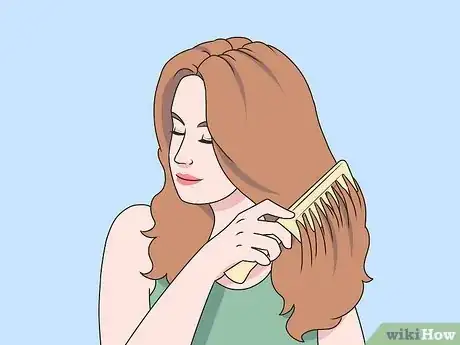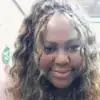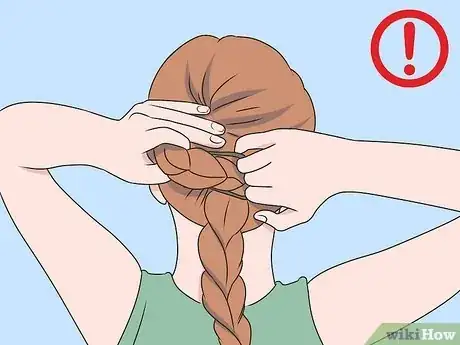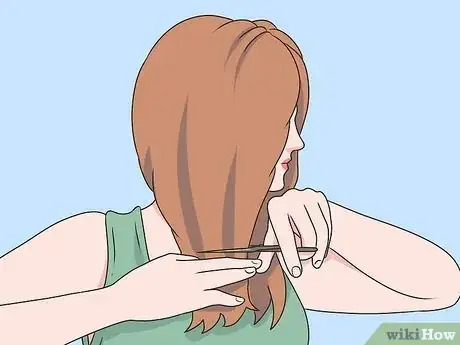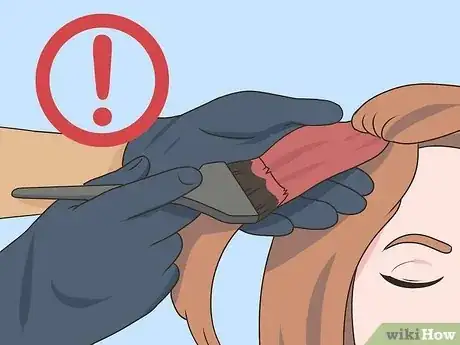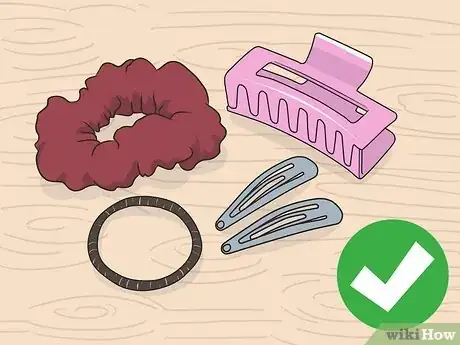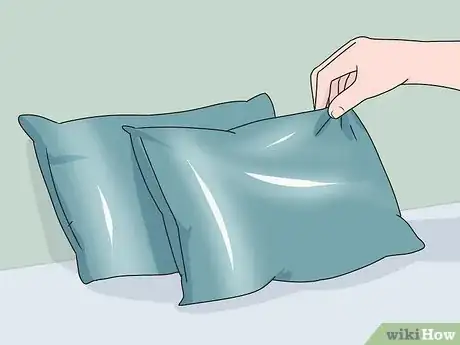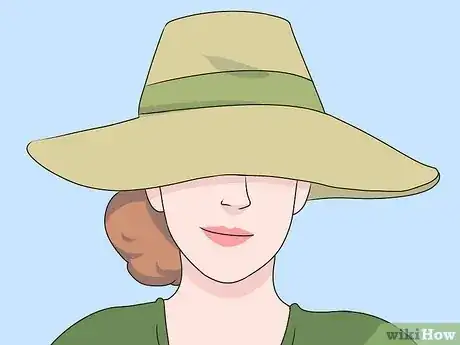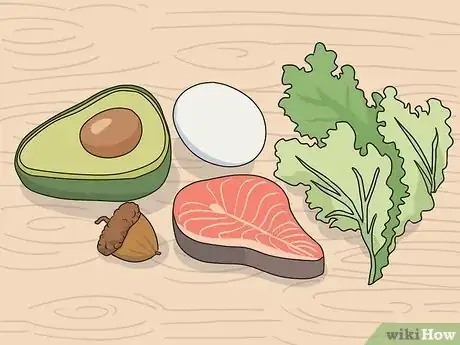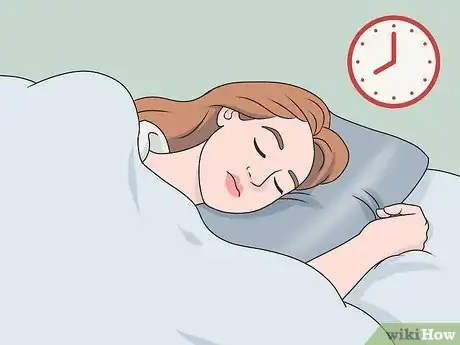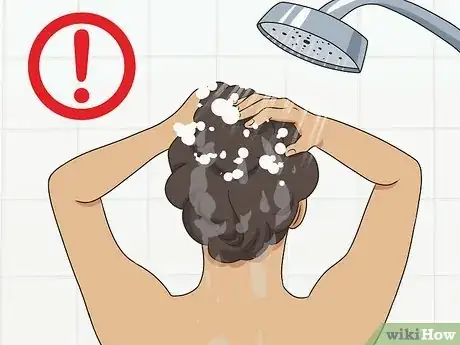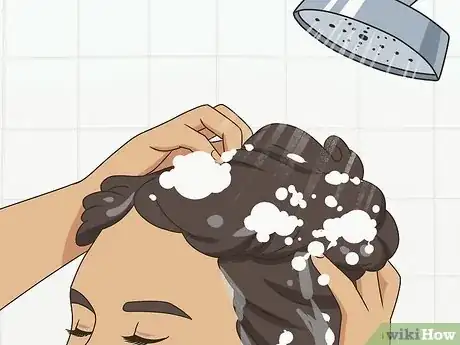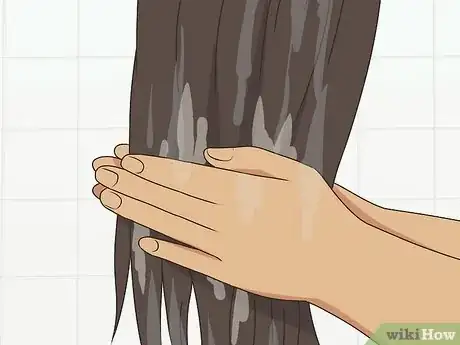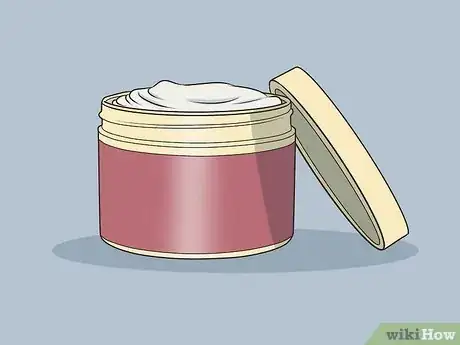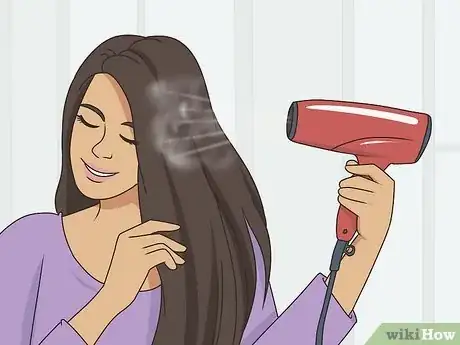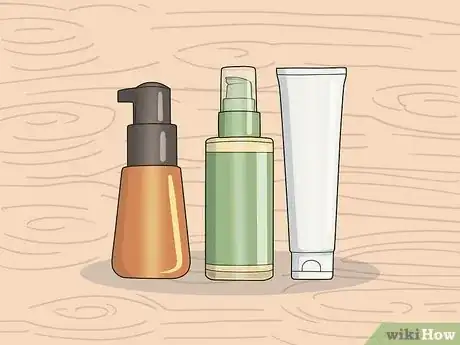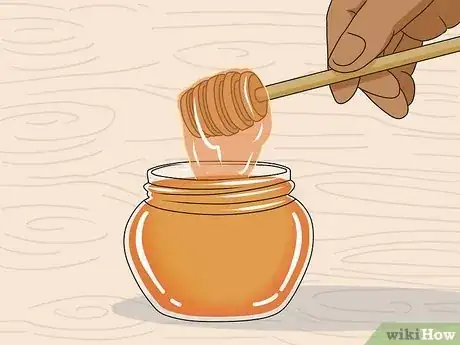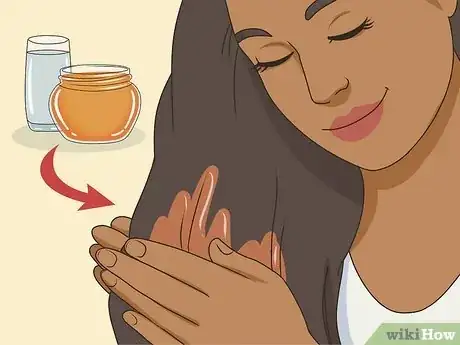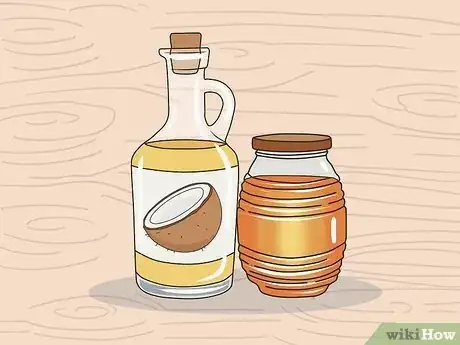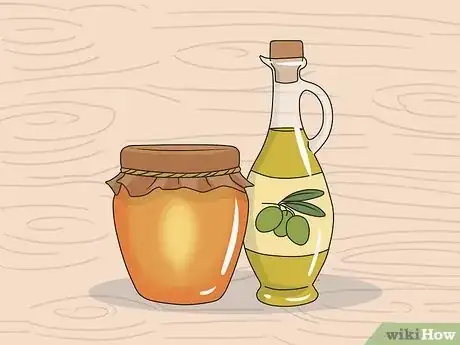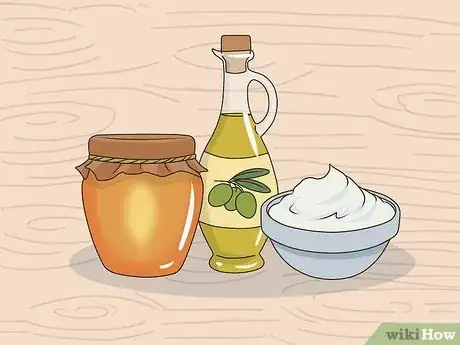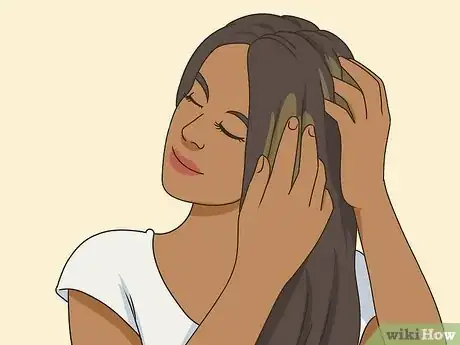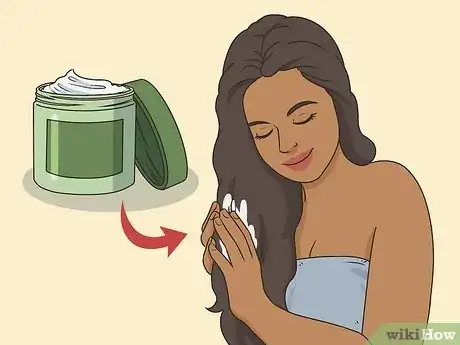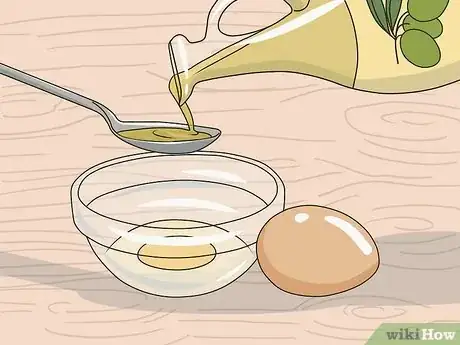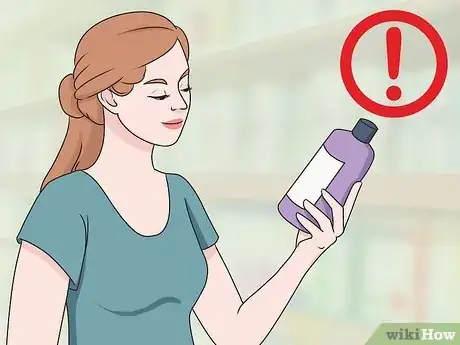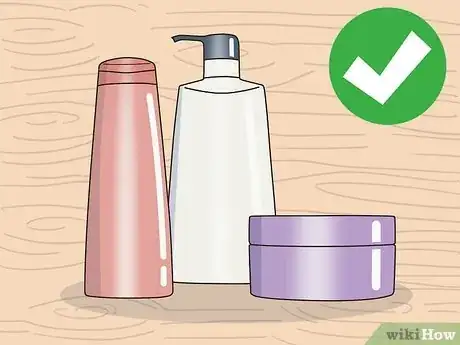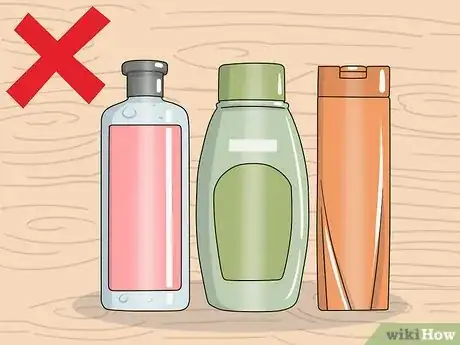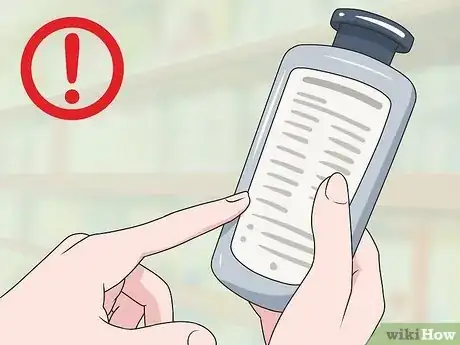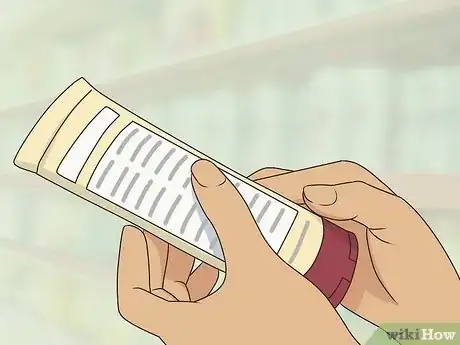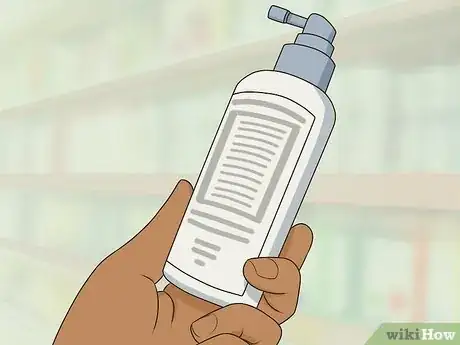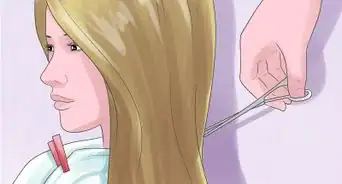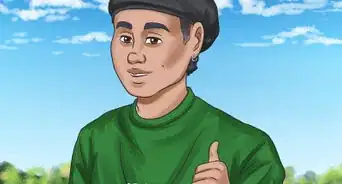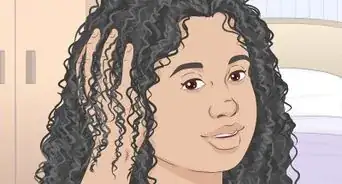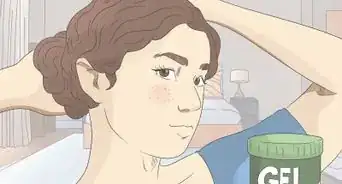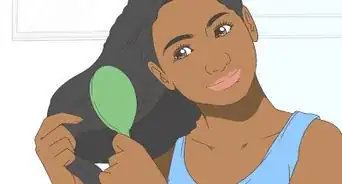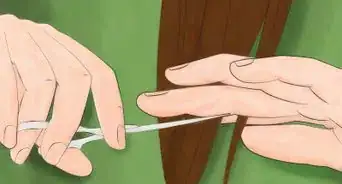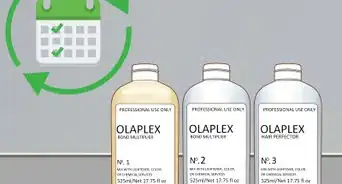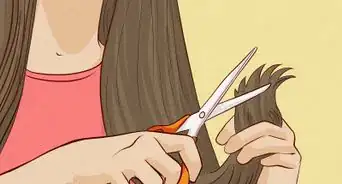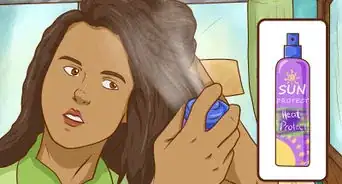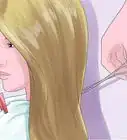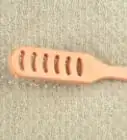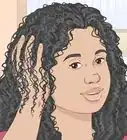This article was co-authored by Ndeye Anta Niang. Ndeye Anta Niang is a Hair Stylist, Master Braider, and Founder of AntaBraids, a traveling braiding service based in New York City. Ndeye has over 20 years of experience in African hair including braiding box braids, Senegalese twists, crochet braids, faux dread locs, goddess locs, kinky twists, and lakhass braids. Ndeye was the first female of her tribe in Africa to move to America and is now sharing her knowledge of African braids passed on from generation to generation.
There are 16 references cited in this article, which can be found at the bottom of the page.
wikiHow marks an article as reader-approved once it receives enough positive feedback. In this case, 100% of readers who voted found the article helpful, earning it our reader-approved status.
This article has been viewed 608,215 times.
Damaged hair can be frustrating, but with a little time, love, and care, you can make it more manageable. One of the first steps to taking care of damaged hair is keeping it moisturized. Dry hair is often very brittle, which leads to damaged hair. This article will give you tips on how you can make your hair feel softer. It will also give you some advice on how you can prevent your hair from becoming damaged in the future by keeping it healthy and strong.
Steps
Caring for Your Hair
-
1Brush your hair properly. Do not brush your hair from the roots straight down to the ends; this causes even more snags, knots, and tears. Instead, work in small sections, and brush your hair starting from the ends first. Make sure that the brush you are using has soft, flexible bristles.
- Do not brush your hair while it is still wet, unless you have curly hair.
- If you have curly hair, brush your hair while it is still wet using a wide-toothed comb. If possible, do this before you rinse out your conditioner. The conditioner will help your comb glide through your strands with less resistance and breakage.
- Consider using a hair detangler spray or gel to make brushing easier. This product will make it easier for the brush or comb to glide through the hair strands.[1]
-
2Avoid hairstyles that strain your hair, such as high ponytails tight braids. These sorts of styles can weaken the hair shaft over time, causing it to become brittle and break. Instead, try to wear your hair down or in looser styles, such as low ponytails or braids. [2]Advertisement
-
3Trim your hair every six to eight weeks.[3] Trimming your hair gets rid of split ends. If you don't trim your hair regularly, the damage may creep further and further up the hair shaft, causing even more damage.
-
4Avoid coloring, perming, or relaxing your hair too often or all at once. If you must chemically treat your hair, then do the perm or relaxing first, wait two weeks, then do the coloring. This gives your hair enough time to recover and prevents further damage.[4]
- If you dye your hair, try to stay within 3 shades. Going too light will over-process your hair and cause it to become dry and brittle.[5]
-
5Use the right hair accessories. Avoid using rubber bands or anything that has sharp, metal edges. Instead, reach for fabric-covered scrunches, plastic hair clips, and elastic hair ties. These will put the least stress on your hair.
-
6Consider investing in a silk pillowcase. Not only do cotton pillowcases dry your hair out, but they cause too much friction, which results in tiny snags and tears.[6]
- Alternatively, you could wrap your hair with a silk scarf before you go to bed.
-
7Protect your hair from harsh weather by covering your hair. You can use a hat, hood, or scarf. The hot, blazing sun can be very damaging to your hair, but so can the extreme cold. Both extreme heat and extreme cold can sap your hair of moisture, leaving it brittle and dry. This leads to damaged hair.
-
8Try eating more food that contain fatty acids, protein, and vitamins. These foods won't erase the damage or make it go away, but they will help ensure that the new hair is healthy and strong. Be sure to maintain a healthy and balanced diet by eating other healthy foods as well.
- Foods that are high in fatty acids include avocado, salmon, and olive oil. Fatty acids help reintroduce moisture to your scalp and hair.[7]
- Protein-containing foods include eggs, fish, and meat. Protein helps your hair become stronger.[8]
- Vitamin C-rich foods include broccoli, citrus, and spinach. Foods high in Vitamin B include berries, eggs, nuts, fish, and other vegetables.[9]
-
9Try getting enough sleep and reducing your stress levels. If you have a lot of stress in your life and don't sleep enough, your hair will appear unhealthy; unhealthy hair is more prone to damage than healthy hair. You can keep your hair healthy (and thus reduce damage) by sleeping more, and trying to manage your stress levels.[10] Here are some ways you can reduce stress:[11]
- Try meditation, yoga, or breathing exercises to focus your mind.
- Exercise to get your body moving. For example, you could jog, play a sport, walk, or even work out in a gym.
- Take up a hobby, such as drawing, knitting or crochet, gardening, painting, playing music, reading, singing, or writing.
Washing and Drying Your Hair
-
1Avoid washing your hair every day. This can strip your hair of its natural oils. Without those oils, your hair will become dry, brittle, and more prone to damage. Instead, consider washing your hair twice a week.[12]
- To help keep your hair fresh in between washes, use a dry shampoo. This won't completely replace washing, but it will help manage that oily look and feel on the days you don't wash.
- If you must wash your hair more often, then wash it every other day.
-
2Use shampoo on the roots and scalp. These are the oiliest parts of your hair, and need the most cleaning. Gently massage the shampoo into your scalp and the roots of your hair using your fingers. Try to use little to no shampoo on the ends of your hair.
-
3Use conditioner on the ends of your hair. This is the driest part of your hair and needs the most moisture, which conditioner provides. Apply the conditioner to the ends of your hair first and gently work your way up towards your head. You should use little to no conditioner on your scalp and roots.
-
4Consider using a deep conditioning hair mask. These sorts of masks are similar to conditioner, except that they give your hair even more moisture and nutrients. Because they are so rich, you do not need to use them every time you wash your hair. A few times a month is enough. You can use a homemade mask or a store-bought mask.[13]
- If you wish to use a store-bought mask, look for something that contains Argan oil, coconut oil, or shea butter. Apply the mask to damp hair, then tuck your hair under a shower cap. Leave the hair mask on for the recommended time (usually 20 to 30 minutes), then rinse it off, followed by your usual hair washing routine. You can use this mask weekly or twice a month, depending on your hair type. Do not leave the mask longer than for the recommended time on the label.
- You can also make your own deep conditioning mask using honey or yogurt. Because these sorts of masks are made from natural ingredients, they do not stay fresh for very long and should be used as soon as they are made.
-
5Dry your hair using a soft towel. Bend forward and cover your hair with the towel. Gently squeeze out the excessive water. Do not rub your hair with the towel, as this can cause your hair to become frizzy or torn.
- Consider using a microfiber towel. These towels are softer than the typical cotton towel, so they cause less hair-damaging friction. Simply wrap your hair up in a microfiber towel and let the towel soak up the excess moisture.[14]
- If you don't have a microfiber towel, even a clean t-shirt will work. This is still more gentle than a typical cotton towel.
-
6Air dry your hair and use a hair dryer sparingly. While it is best to let your hair dry on its own, it is possible to use a hair dryer without damaging it. Let your hair start to dry naturally on its own. When it is about 70% to 80% dry, you may use a hair dryer on your hair. Be sure to keep it 6 inches (15.25 centimeters) away from your hair, and use the lowest setting possible. Too much heat from a hair dryer can damage your hair.[15]
- If you must use your blow dryer, always apply a heat protectant product beforehand to help prevent further damage to your locks.
-
7Avoid heat styling and use heat-protection sprays when you do. Curling irons and hair straighteners might be tempting to use, especially if your hair is frizzy. While they may help tame the frizz, they can also damage your hair even further. Because of this, you should avoid heat styling whenever possible. If you must curl or straighten your hair, then use heat protecting creams and sprays. Simply apply them to your hair before using a curling iron or hair straightener.
-
8Consider following up with some hair oils or smoothing hair products. Make sure that you are using a product intended for dry or damaged hair. These products will include a moisturizing or nourishing ingredient, such as Argan oil, coconut oil, or shea butter.[16] Simply apply a small amount of product to your palm, and then rub the product through your hair, focusing mostly on the ends. Your scalp and roots should receive little to no product.
Using Masks and Treatments
-
1Use honey in your conditioner. Honey is a natural moisturizer, which makes it ideal for reviving dry, damaged hair. Simply add a few drops of honey into your conditioner.
-
2Hydrate your hair with a simple honey mask. You will need ¼ cup (90 grams) of raw honey and just enough water to thin the honey out. Apply the mask to damp hair and leave it in for 30 minutes. Wash it out using shampoo and conditioner.[17]
-
3Smooth the frizz down using honey and apple cider vinegar. You will need ¼ cup (90 grams) of raw honey and 10 tablespoons of apple cider vinegar. Apply the mask to damp hair and leave it for 15 minutes. Wash it out using shampoo and conditioner. The apple cider vinegar will also get rid of any buildup in your hair and make it shinier.[18]
-
4Give your hair an ultra-moisturizing treatment with honey and coconut oil. You will need ¼ cup (90 grams) of raw honey and 3 tablespoons of warmed coconut oil. Apply the mask to damp hair and leave it for 10 minutes before washing it out using shampoo and conditioner.[19]
-
5Make a simple hair oil using honey and olive oil. You will need ½ cup (175 grams) of raw honey and ¼ cup (60 milliliters) of olive oil. You can apply a small amount of this oil whenever your hair is particularly dry and brittle.[20]
-
6Treat your hair with a yogurt-based hair mask. Combine 1 teaspoon of olive oil, 1 tablespoon of raw honey, and ¼ cup (65 grams) of plain yogurt in a bowl. Apply the mask to damp hair and let it sit for 15 to 20 minutes. Wash your hair with warm water, shampoo, and conditioner. The olive oil and honey will work together to restore shine and softness, while the yogurt will add protein, which is necessary for strong, healthy hair.[21] [22]
-
7Pamper your hair with a natural oil hair mask. Heat about 3 tablespoons of oil in a double boiler or microwave, and apply it to damp hair. Be sure to massage it into your scalp. Put your hair up under a shower cap. The cap will help keep in both the moisture and the heat. Let the mask sit in your hair for 30 minutes to 2 hours before taking the cap off and rinsing it off with hot water. Wash your hair with shampoo, and then rinse it again with cool water. Be sure to rinse the back of your neck and shoulders as well.[23] Here is a list of oils you can use in your hair, and what they can do for you:[24]
- Use avocado oil if you have dry or frizzy hair.
- Castor can help strengthen brittle hair and add back some thickness if your hair has thinned.
- Use coconut oil for extra moisture, softness, and shine. This oil is also good for managing dandruff.
- Jojoba oil is great for those with oily hair.
- Sesame oil will restore shine to dull hair.
- Consider combining any of the above oils.
-
8Use a store-bought protein mask. The protein in these types of masks will help rebuild your hair's natural keratin. These masks also tend to be deep-conditioning, meaning that they will also help your hair retain moisture; this is especially beneficial if your hair is coarse or curly.
-
9Make your own protein hair mask by mixing together one raw egg and one tablespoon of olive oil. Massage the mask into damp hair, and tuck it under a shower cap. Let it sit for 30 minutes before rinsing it off with cool water. Shampoo and condition your hair as usual after using this mask. The egg yolk will give your hair extra protein, while the egg white will help remove excess oils. The olive oil will moisturize your hair.[25]
Buying the Right Hair Product
-
1Avoid drugstore brands when buying hair products. They may be cheap and easy on your wallet, but they will be harsh on your hair. Many drugstore brand shampoos and conditioners contain silicones and harsh chemicals that can dry out and damage your hair. What you save on shampoo and conditioner you will later spend on buying masks and treatments. Instead, consider buying some salon brands. They are more expensive, but they are also less-damaging when it comes to hair. They help rebalance your hair's pH and restore moisture.[26]
-
2Look for products that will hydrate and nourish your hair. Just because a product does not say that it is meant for damaged hair doesn't mean that it won't help. If you cannot find something that says "for damaged hair" on the label, look for something that will hydrate, nourish, or strengthen your hair. These sorts of traits will help erase the damage, or at least make it less noticeable.[27] Here is a list of things you should look for when buying shampoo, conditioner, and other products:
- Products that say "Dry and Brittle Hair" are great for damaged hair. They are extra nourishing and moisturizing and will help make your hair stronger.
- Look for products that contain moisturizers, such as Argan oil, coconut oil, or shea butter.
- Smoothing and softening shampoos and conditioners contain healthy oils that will make our hair appear healthier and less frizzy.
- Any products that say: repairing, hydrating, or moisturizing.
- Consider buying some leave-in conditioners. They will help lock the moisture in, and prevent your hair from drying out.
- If you dye your hair, then look for something that says "For Colo-Treated Hair." These products not only help prevent fading, but they also provide your hair with extra moisture and nourishment.
-
3Pass on the overly-fragranced shampoos.[28] Most of these shampoos contain alcohols and chemicals that are bad for your hair. They will cause your hair to become more brittle and dry, which could lead to more damage.
- If you must use something fragranced, look for something with a natural fragrance, such as essential oil or coconut oil.
-
4Avoid products containing parabens, sulfates, and other harmful ingredients. Certain ingredients found in shampoos and conditioners (particularly the drugstore kind) can be very harmful to your hair and body. You can prevent damaging your hair even more by avoiding the following ingredients:
- Parabens are preservatives that have been linked to breast cancer.
- Sulfates often appear in the ingredient list as Sodium Lauryl Sulfate. They are harsh detergents often found in floor cleaners and capable of stripping your hair of its natural oils, resulting in dry and brittle hair. They are responsible for the foam and lather in a shampoo.
- Ureas are added for their anti-fungal and antimicrobial properties. Unfortunately, they have been linked to dermatitis and cancer.
- Phthalates/plasticizers may disrupt the endocrine system
- Petrochemicals, such as Lanolin, Mineral Oil, Paraffin, Petrolatum, Propylene Glycol, and PVP/VA Copolymer seal the toxins in your hair while keeping moisture and oxygen out.
-
5Look for natural oils and moisturizers in the ingredient list. Certain ingredients found in shampoos and conditioners are beneficial for your hair. Here is a list of oils and moisturizing agents that should be in your hair products:[29] [30]
- Oils such as Argan, avocado, and olive oil
- Moisturizing agents such as glycerin, glyceryl stearate, propylene glycol, shea butter, sodium lactate, sodium PCA, and sorbitol.
-
6Know what alcohols should and should not be in your hair products. Many hair products contain alcohols. Some of them are too drying or your hair, leading to more damage, and should be avoided. Others are not bad for your hair, and make good substitutes:[31]
- Avoid the following alcohol: isopropyl alcohol, propanol, propyl alcohol, and SD alcohol 40.
- The following alcohols are not bad for your hair: Cetearyl alcohol, cetyl alcohol, and stearyl alcohol.
Expert Q&A
Did you know you can get expert answers for this article?
Unlock expert answers by supporting wikiHow
-
QuestionWhat's the easiest way to fix damaged hair?
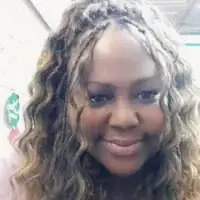 Ndeye Anta NiangNdeye Anta Niang is a Hair Stylist, Master Braider, and Founder of AntaBraids, a traveling braiding service based in New York City. Ndeye has over 20 years of experience in African hair including braiding box braids, Senegalese twists, crochet braids, faux dread locs, goddess locs, kinky twists, and lakhass braids. Ndeye was the first female of her tribe in Africa to move to America and is now sharing her knowledge of African braids passed on from generation to generation.
Ndeye Anta NiangNdeye Anta Niang is a Hair Stylist, Master Braider, and Founder of AntaBraids, a traveling braiding service based in New York City. Ndeye has over 20 years of experience in African hair including braiding box braids, Senegalese twists, crochet braids, faux dread locs, goddess locs, kinky twists, and lakhass braids. Ndeye was the first female of her tribe in Africa to move to America and is now sharing her knowledge of African braids passed on from generation to generation.
Hair Stylist & Master Braider
-
QuestionDo cornrows damage your hair?
 Ndeye Anta NiangNdeye Anta Niang is a Hair Stylist, Master Braider, and Founder of AntaBraids, a traveling braiding service based in New York City. Ndeye has over 20 years of experience in African hair including braiding box braids, Senegalese twists, crochet braids, faux dread locs, goddess locs, kinky twists, and lakhass braids. Ndeye was the first female of her tribe in Africa to move to America and is now sharing her knowledge of African braids passed on from generation to generation.
Ndeye Anta NiangNdeye Anta Niang is a Hair Stylist, Master Braider, and Founder of AntaBraids, a traveling braiding service based in New York City. Ndeye has over 20 years of experience in African hair including braiding box braids, Senegalese twists, crochet braids, faux dread locs, goddess locs, kinky twists, and lakhass braids. Ndeye was the first female of her tribe in Africa to move to America and is now sharing her knowledge of African braids passed on from generation to generation.
Hair Stylist & Master Braider
-
QuestionHow do I know if my hair is damaged or not?
 Ndeye Anta NiangNdeye Anta Niang is a Hair Stylist, Master Braider, and Founder of AntaBraids, a traveling braiding service based in New York City. Ndeye has over 20 years of experience in African hair including braiding box braids, Senegalese twists, crochet braids, faux dread locs, goddess locs, kinky twists, and lakhass braids. Ndeye was the first female of her tribe in Africa to move to America and is now sharing her knowledge of African braids passed on from generation to generation.
Ndeye Anta NiangNdeye Anta Niang is a Hair Stylist, Master Braider, and Founder of AntaBraids, a traveling braiding service based in New York City. Ndeye has over 20 years of experience in African hair including braiding box braids, Senegalese twists, crochet braids, faux dread locs, goddess locs, kinky twists, and lakhass braids. Ndeye was the first female of her tribe in Africa to move to America and is now sharing her knowledge of African braids passed on from generation to generation.
Hair Stylist & Master Braider
Warnings
- What one product may work for your friend may not work for you. If you try something, and it does not work or it makes your hair even more damaged, stop using it and try something else.⧼thumbs_response⧽
References
- ↑ Ndeye Anta Niang. Professional Hair Stylist. Expert Interview. 10 January 2020.
- ↑ Ndeye Anta Niang. Professional Hair Stylist. Expert Interview. 10 January 2020.
- ↑ WebMD, Help for Dry or Damaged Hair
- ↑ American Academy of Dermatology, How to Stop Damaging Your Hair
- ↑ WebMD, Help for Dry or Damaged Hair
- ↑ Huffington Post, 13 Hair Mistakes You Need to Stop Making
- ↑ WebMD, Help for Dry or Damaged Hair
- ↑ Wellness Mama, 5 Ways to Improve Hair Naturally
- ↑ Wellness Mama, 5 Ways to Improve Hair Naturally
- ↑ Wellness Mama, 5 Ways to Improve Hair Naturally
- ↑ WebMD, Stress Management – Ways to Relieve Stress
- ↑ Bustle, How to Wash Your Hair
- ↑ Ndeye Anta Niang. Professional Hair Stylist. Expert Interview. 10 January 2020.
- ↑ Bustle, How to Wash Your Hair
- ↑ Prevention, the Healthiest Way to Dry Your Hair
- ↑ Ndeye Anta Niang. Professional Hair Stylist. Expert Interview. 10 January 2020.
- ↑ Everyday Roots, 4 Honey Treatments for Dry and Damaged Hair
- ↑ Everyday Roots, 4 Honey Treatments for Dry and Damaged Hair
- ↑ Everyday Roots, 4 Honey Treatments for Dry and Damaged Hair
- ↑ Everyday Roots, 4 Honey Treatments for Dry and Damaged Hair
- ↑ Crunchy Betty, Food on Your Face (and Hair!): Yogurt
- ↑ DIY Natural, Homemade Hair Masks for Dry or Damaged Hair
- ↑ Crunchy Betty, The Secrets to a Phenomenal Hot Oil Hair Treatment: Part 2 – Indulging
- ↑ Crunchy Betty, The Secrets to a Phenomenal Hot Oil Hair Treatment: Part 1 – Creating
- ↑ Free People, 5 Natural Home Remedies for Frizzy Hair
- ↑ She Knows, Bring Damaged Hair Back from the Dead
- ↑ Ndeye Anta Niang. Professional Hair Stylist. Expert Interview. 10 January 2020.
- ↑ WebMD, Good & Bad Picks for Dry Hair
- ↑ WebMD, Good & Bad Picks for Dry Hair
- ↑ WebMD, Help for Dry or Damaged Hair
- ↑ WebMD, Good & Bad Picks for Dry Hair
About This Article
To take care of damaged hair, try to wash your hair just twice a week, or at least every other day, since washing your hair every day strips it of the oils that keep it soft and healthy. Also, try applying a deep-conditioning hair mask a few times a month to restore moisture and nutrients. When you get out of the shower, let your hair air dry or gently squeeze it with a soft towel so you don't damage it. Then, before you style your hair, work some moisturizing or nourishing hair oil into the ends of it. To learn how to make your own hair masks to treat damaged hair, scroll down!
